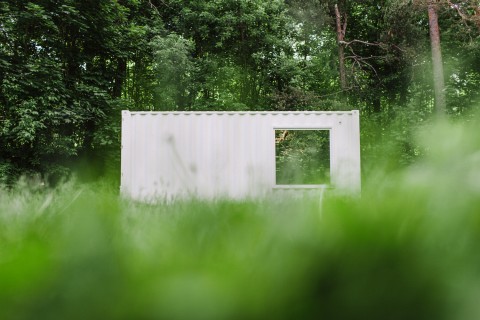Founded in 2013, NEEDS&WANTS is a Canadian label known for its subtly luxe takes on outerwear staples like satin baseball jackets with one arm made in a contrasting color or fabric, adding a tasteful twist to otherwise versatile garments. Designer Sean Brown has expanded his line to include complementing pieces like fuzzy half-zip fleece layers, fur-collared bomber jackets, and elongated tail shirting, which tends to sell out on the brand’s web shop.
A multi-hyphenate creative, Brown’s line is just one avenue of expression from an otherwise teeming visual mind. He possesses an equal appreciation of art, photography, and architecture—muscles he recently got to flex when it came to concepting NEEDS&WANTS’ latest endeavor, an 8×20 foot modified shipping container that functions as its first showroom and retail space.
Currently placed in the middle of the woods, the oddly located space creates a unique harmony with its verdant surroundings. And the eminently mobile concept will soon move to different cities, providing a new way for the predominantly online brand to engage in the physical world.
We interviewed designer Sean Brown about the struggles of being an independent brand today, why it was time to move into the retail store and the most important lessons he’s learned after three years in the business.
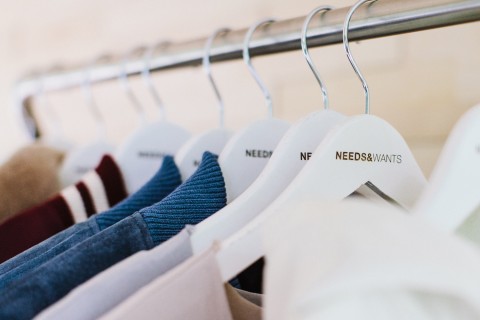
How would you define the brand ethos of NEEDS&WANTS?
Paring down to the essentials with understated taste. We strive to present minimalism without being empty, scarce, and uninviting. Our approach to design is concentrated and intentional.
How has NEEDS&WANTS evolved since its inception?
We didn’t have a lot of the components that define the character of the brand now. The focus on travel and architecture play a huge role in our process, and we’re able to share stories other than our own through our bi-annual zine, NEEDS&WANTS Paper.
In the beginning, we were just varsity jackets, which we still focus on primarily, but we’ve added a few other items to our collection like the Fleece Wrap, Fishtail Flannel and a bougie parfumée.
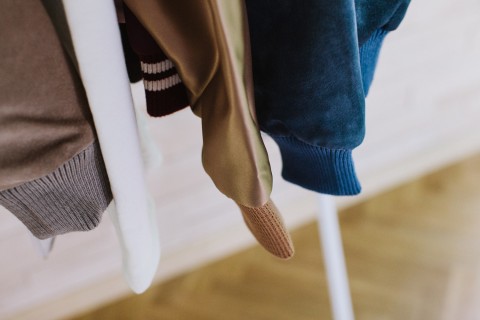
What have you been up to since the last release?
Aside from traveling and putting together the next collection, the container was a big focus for us the past few months. I have to say, I’ve got a whole new appreciation for contractors, details and how things are built.
What challenges have you faced as an independent designer?
Finding a rhythm that works for us. When you get into this, you look around you and feel like there are things you should have, or things you should be doing because that format worked for someone else. The truth is, times have changed and you can build an infrastructure that works for you. You figure all that out through trial and error, which is very important as the brand grows.
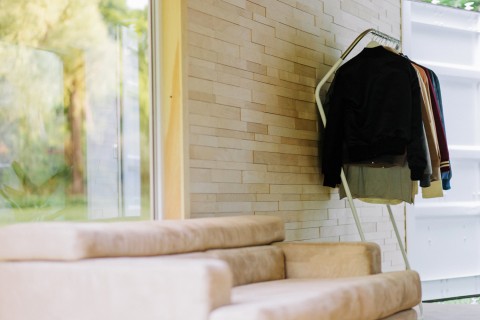
What do you think some of the most challenging things are about being an independent designer?
Staying true to what initially made you special. But I don’t think that means not trying new things or challenging yourself to exceed whatever you’ve accomplished previously. I think a huge challenge in today’s market is storytelling; there is a lot of product being made, but not a lot of brands with a narrative. Without the brand narrative, it’s hard to have longevity. Fashion is a competitive space, but there is room for multiple perspectives.
What are the most important lessons you’ve learned after three years in the business?
Things don’t always go as planned, but things still go. Use your own money as long as you can and mind your own business.
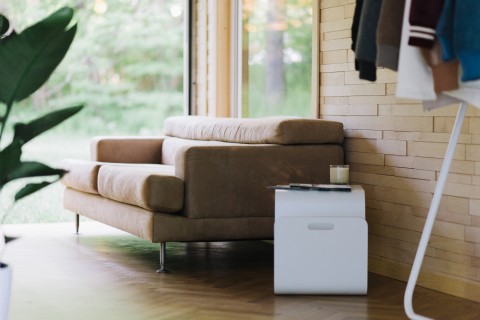
Why did moving into the retail sector make sense?
For us, brand environmentalism is what we want to build our retail channel on. As an online retailer, we do our best to give sizing and product information to our customers, but being a real brand requires an offline access point where the product can be viewed and felt as intended.
What inspired the concept of the retail and showroom space?
This goes back to the point about finding a rhythm. We asked ourselves the best way to build a space offline that was compact, reflective of our ethos, and would still allow us to be hands-on with the design—an alternative to traditional retail that we can transport and even interlock differently in each setting.
Where the hell do you park that thing?
Location is key for this concept. This isn’t just about our space but mores its surroundings. Every backdrop must complement our brand narrative to a degree. The first location in the woods allows visitors to experience the brand in an intimate way.
But that isn’t to say we won’t be opening in more industrial landscapes. It could be anywhere really, it just has to have visual impact.
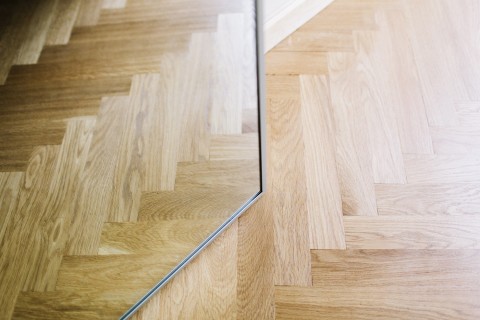
Can you describe the interior design of the space?
Because we’re working with such small space, details like our choice in furniture have to be functional. Our coffee table, for example, turns into a laptop desk once it’s turned on its side. We imported our rack from Belgium, and it literally just leans on the wall. Our engineered wood panelling on the walls and ceiling are ideal for the outdoors as wood tends to shift depending on weather conditions.
Normally, containers are have one entrance point, but we installed a second garage door entrance to maximize on as much natural light as possible. The two adjacent windows are also an advantage for natural light depending on which direction we position the unit.
The best result for lighting are when the windows face north and south. The herringbone floor was really an aesthetic decision; that European touch. We also have a full power source and LED linear slot lights for evening hours.
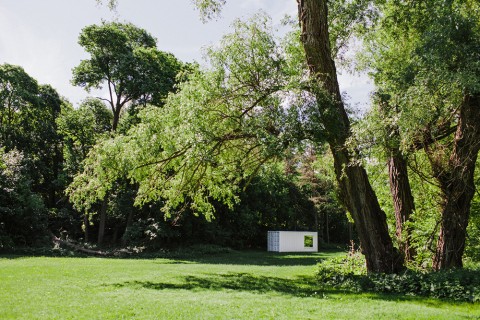
Is the container effectively a mobile concept? Are there plans to bring it to different cities?
Most definitely. We’ll be heading to New York after a few rotations in Toronto, and are looking into Miami for the fall. It’s an added bonus being able to ship the space to another country.
Shop NEEDS&WANT’s current collection here.

